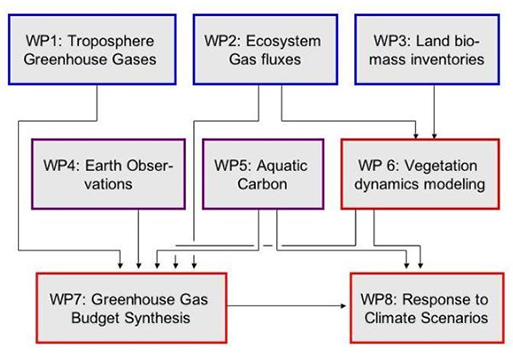AMAZONICA
Amazon Integrated Carbon Analysis
AMAZONICA Project Tropical forests constitute globally the largest forest area, are the largest reservoir of aboveground organic carbon and are exceptionally species rich. Thus current and future changes of tropical forests due to human pressure and a changing climate, possibly via feedbacks, have the potential to affect significantly atmospheric greenhouse gas burden and chemistry, climate, and global biodiversity. Central diagnostics of the state and changes of tropical forest systems are their net carbon balances. However currently we cannot even estimate the sign of these balances. This is because, although estimates of fluxes associated with different processes like deforestation exist with their also being evidence for a response of undisturbed rainforests to a changing environment, different estimates vary substantially. It is difficult to determine the overall significance of these independently gained results. One major large-scale constraint on the net balance of the terrestrial tropics that would resolve this discrepancy is regular tropospheric greenhouse gas concentrations over the relevant areas. These reflect the integrated surface exchange over large regions and can be translated into large scale fluxes given knowledge of atmospheric transport. We thus propose to focus on the Amazon basin to obtain a coherent process-based picture of the carbon budget over a five year period. Five years is sufficient to capture both El Niño/La Niña and non El Niño/La Niña years and thus permit extrapolation in time. Our approach will have three pillars: |
|
In a final step we will synthesize these bottom-up and top-down constraints to obtain multiply constraint and mutually consistent carbon fluxes. We expect to obtain a much better quantification of a major but currently poorly known component of the global carbon cycle based on an understanding of the underlying processes and their large-scale effect, and a much improved capability to predict its response to future climate change. Although focusing on CO2 we will also investigate large scale balances of CO and CH4, the former also being used as a tracer for biomass burning. The study of CH4 will be especially important as topical forests have recently been inferred to be possible contributors to the global methane budget. |
